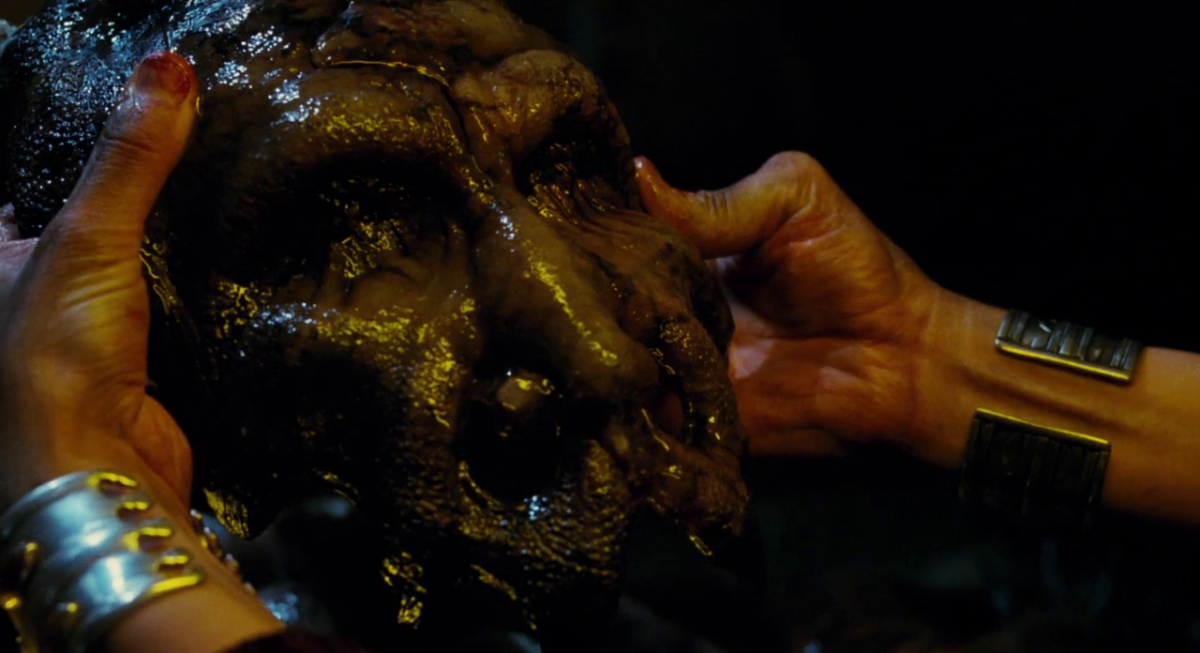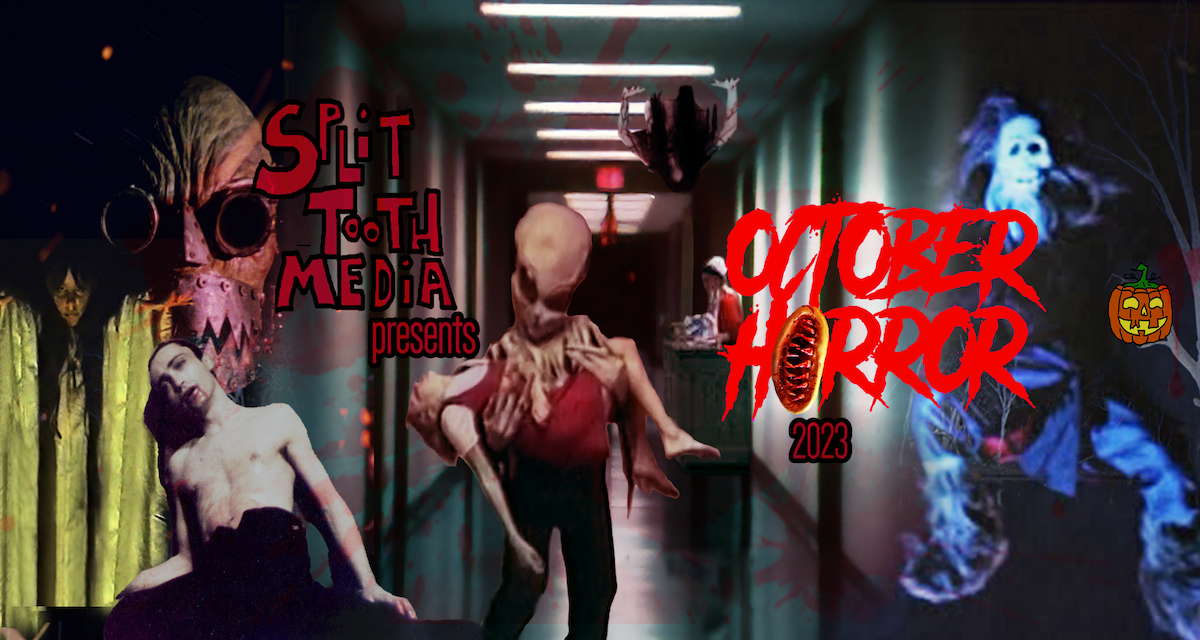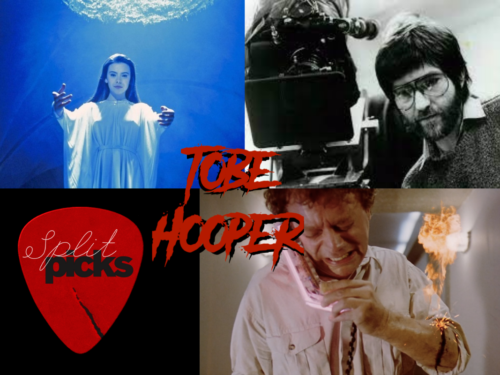For his first US production, del Toro was hired to direct a B-level monster movie. He had different plans. Frankie Vanaria explores the troubled legacy of 1997’s ‘Mimic’
The two biggest blockbusters of 1997 were both cautionary tales about scientific and technological progress and the abuses thereof. Looking at them today, it’s tempting to see then-audiences as being drawn to films that spoke to their anxieties about a world that seemed to be rapidly changing. The decade witnessed the rise of the 24-hour news cycle, the world’s first cloned animal in Dolly the Sheep, the end of the Cold War, the proliferation of multinational corporations and the consequent redistribution of labor, and the slow emergence of the World Wide Web as a tool of global communication. Although Steven Spielberg’s The Lost World: Jurassic Park (1997) and James Cameron’s Titanic (1997) are not directly about all of these things, they thematize the very subject of humans failing to learn from their mistakes made in the name of progress, or of humans failing to recognize their mistakes in the first place.
The Lost World kicked off the summer in May 1997 and Titanic closed the year in December, which could be seen as the passing of the torch from Spielberg to Cameron as the auteur of high-concept cinema. In this light, there is something reassuring and maybe even triumphant about Spielberg and Cameron being ones to talk their audiences through the information age as it transitioned to the new millennium. But as it happens, this optimistic narrative — the trusted auteurs who caution audiences about the potential consequences of technological progress, seemingly in the hope of pulling the world back from the brink of massive societal transformations — found its antithesis in another film released in 1997, directed by Guillermo del Toro: Mimic.
Like The Lost World and Titanic, Mimic is a cautionary tale about humanity’s misguided use of science and technology — and even more like The Lost World, Mimic is a creature feature in which humans play God and fail to contain their creations. Del Toro’s film begins with a plague visited on New York City that spreads from cockroaches to children and causes them to die en masse. Realizing that the only way to contain the disease is to eliminate the roaches, Dr. Peter Mann (Jeremy Northam), deputy director of the CDC, calls in assistance from Dr. Susan Tyler (Mira Sorvino). Tyler bioengineers a new insect called the “Judas,” a cross between a termite and a mantis, designed to mimic the appearance of the roaches and release an enzyme that will decimate the vermin. Shortly thereafter, the Judas bugs will themselves die off.

Susan’s strategy is initially successful. With the infestation eliminated and the spread of the disease quelled, things return to normal in NYC, and Peter and Susan get married. The rosy picture is disrupted when Susan begins to investigate the appearance of a new bug that bears a biological resemblance to the Judas. It soon becomes clear that the Judas did not die out as expected but instead evolved into its own species capable of physically resembling the facial structure and bodily profile of an adult human being. Consequently, the Judas insects have used their ability to hide in plain sight and prey on unsuspecting humans. As such, Susan and Peter commit themselves to eliminating the Judas breed with the help of Peter’s assistant Josh (Josh Brolin), an MTA officer named Leonard (Charles S. Dutton), a young autistic boy named Chuy (Alexander Goodwin), and his guardian, Manny (Giancarlo Giannini).
That Mimic is about an experiment gone awry is fitting given the production context for the film. This was the first film del Toro made in the US, after starting his career with his inventive take on the vampire film, Cronos (1993), made in his native country of Mexico. Having received international recognition for Cronos, del Toro was contracted by Harvey and Bob Weinstein’s Miramax to direct Mimic, an adaptation of Donald A. Wollheim’s 1942 short story of the same name. Del Toro’s experience working for Miramax is something of a Hollywood legend, and the director has been open about the fights he had with Bob Weinstein over the film’s tone. Miramax wanted Mimic to be a B-horror film in which human-sized insects terrorize the citizens of New York. And in terms of the plot, that is basically what happens. But rather than making it a straight horror film, del Toro imagined the insects as somewhat sympathetic, but still dangerous figures, akin to Frankenstein’s Monster — this is also why so much of the film revolves around Susan and her responsibility for creating the Judas creatures and her need to set things right. Along with this, children and their proximity to death were crucial to del Toro’s conception of the story, and his film begins with images of children gasping for breath in their hospital beds with no one capable of helping them. And the Judases are, of course, meant to register as the grotesque reflection of these children who are condemned to die, but whose very tragedy haunts the narrative. It should be said that del Toro’s version of Mimic bears little narrative resemblance to Wollheim’s short story, in which a man realizes that a mysterious figure from his childhood was actually an insect taking the form of a grown man. And, of course, it hardly needs to be said that del Toro’s philosophical vision and tone for Mimic is not what Weinstein wanted for a cheap creature feature. After several fights between the director and producer, Bob Weinstein stripped del Toro of his final cut privileges. The theatrical cut of the film in 1997 did not reflect del Toro’s vision, and in 2011 he was finally able to release his cut of the film on Blu-ray. Although del Toro has maintained that this cut is closer to his original vision for Mimic than the theatrical release was, he has still distanced himself from the project and to this day has described the entire experience of making Mimic as a nightmare.

Despite what del Toro encountered while working for Miramax and his reservations about the version of the film he was able to release, there is much to appreciate about del Toro’s cut of Mimic. Although it might not have enjoyed the budget or profile of Spielberg’s or Cameron’s films that same year, Mimic is a remarkably ambitious project. Not only did del Toro take Wollheim’s story and rework it according to his own authorial sensibilities, he did so in order to make Mimic into an allegory for the modern world. In one sense, the Judas insect defies the very idea that humanity could ever overcome the processes of nature or death through technological progress. While the Judas might have been a tool engineered to thwart a disease that kills children in droves, the epidemiological crisis is symptomatic of a more serious problem: That somehow, the most “advanced” nation on the planet cannot muster its resources when the people need it to. In a manner of speaking, it is as if the United States had become a failed state incapable of administering to its citizens’ needs.
But in another sense, the Judas is a perverse mockery of humanity itself. Nowhere is this better expressed in Mimic than when Susan first encounters an adult Judas lurking in the NYC subway. She sees the silhouette of what appears to be a male body cast against the wall opposite the platform, the actual body occluded by a column. Susan cautiously approaches and asks for the time, but after getting no response she realizes that she might be in danger. The Judas comes out from hiding, resembling a tall man wrapped in a trench coat until the creature unveils itself and attacks Susan. In full view, the Judas could not be confused for a human, and yet it looks undeniably human. It is not that the Judas bug has a limited capacity to imitate us — it is precisely that there is only so much that needs to be imitated in the first place. In other words, the Judas is already human — already the product of human ingenuity and progress, already the mark of a society that has figured everything out and is moving at full speed toward the future. The obviously thin disguise it assumes, which could only function as such under the cover of darkness, is an expression of how little humans recognize or understand themselves: The Judas can only be perceived as a threat insofar as it can prey on humans who are momentarily deceived by it. The true horror of the Judas is not the physical threat it represents, but that humans cannot fathom the machinations of the natural world, the cosmos, or the abyss of death without, in effect, dumbing it down with science. À la Lovecraft, a definitive influence throughout del Toro’s work, the Judas represents the very limit of human knowledge — or rather, that the horror we feel when faced with the unknown is itself only a crude and superficial response, a mask we cover ourselves with to avoid facing genuine psychological destruction. In this respect, Bob Weinstein was always correct in seeing del Toro’s Mimic as a deficient horror film: If the film was too disturbing it would take away from the themes of the film. And this is the same reason that Universal’s classic monster movies, another foundational horror influence for del Toro, have never lost their magnificence.

There were two direct-to-video sequels to the theatrical release of Mimic: Mimic 2 (2001) and Mimic: Sentinel (2003). As one might expect, del Toro was not involved with either production, although he and Matthew Robbins are still given writing credits on Mimic 2 for their story in the original film. The plots of the sequels follow the same idea of Mimic, with the human-sized bugs camouflaging themselves among the denizens of New York City. But these sequels shift their attention to new characters, leaving behind del Toro and Robbins’ original interest in the scientific response to the crisis. Indeed, Mimic 2 revolves around a New York City schoolteacher, Remi (Alix Koromzay), who is targeted by a Judas that wants to mate with her. Much of the film takes place in the school with the Judas pursuing Remi, two of her students, and Detective Klaski (Bruno Campos) who is investigating a string of murders that implicate Remi as a suspect. Mimic: Sentinel feels only loosely connected to the franchise, with much more interest placed on its human characters than the insects. Marvin Montrose (Karl Geary) was one of the children who was afflicted with the disease spread by the roaches. His illness has necessitated a life spent isolated from the world and in confinement within a highly sterilized room. Now in his 20s, he has developed a fascination with photography and is keen to take photos of his neighbors in their run-down neighborhood. The film is an obvious riff on Rear Window (1954), with the update being that Marvin, along with his sister Rosy (Alexis Dziena) and her friend Carmen (Rebecca Mader), witness their neighbors disappearing and realize the danger presented by the Judas insects. But in Sentinel, the Judas is scarcely present, and director JT Petty’s film is more of a paranoid thriller than a horror film. Notably, it is Jean de Segonzac’s Mimic 2 that is closer to Bob Weinstein’s vision for the original film with the grotesquery of the Judas and particularly its sexual drive for Remi who, refreshingly, is not reduced to the final girl treatment.
Given that they were produced by Dimension Films, Bob Weinstein’s company, and horror and comedy schlock house Neo Art & Logic, I don’t want to be too critical of Mimic 2 and Sentinel. They are what they are supposed to be. And they are not entirely without interest: There is certainly something to the idea of the Judas carving its way through Remi’s school as a metaphor for the dismantling of public education in the George W. Bush era. There is also something to Sentinel channeling a post-9/11 Islamophobia towards one’s neighbors and those who “pass” for being “normal” citizens. However, that also seems to give the film too much credit. But ultimately, both films are much more invested in action sequences and their protagonists fleeing for their lives, and in that way they feel run-of-the-mill compared to del Toro’s Mimic. And it is not even that del Toro forgoes the typical “fight or flight” moments. In his Mimic, the thing that the characters are running from or trying to kill cannot be overcome so easily.
Explore more of Frankie Vanaria’s writing on Guillermo del Toro on Split Tooth:
Vanaria is also the author of Postmodern Mysticism, a study of the films of Guillermo del Toro. You can purchase a copy on Amazon here
Purchase the director’s cut of Mimic on Blu-ray here
Stream Mimic on Amazon Prime
Find the complete October Horror 2023 series here:

Stay up to date with all things Split Tooth Media and follow Frankie on Twitter
(Split Tooth may earn a commission from purchases made through affiliate links on our site.)





